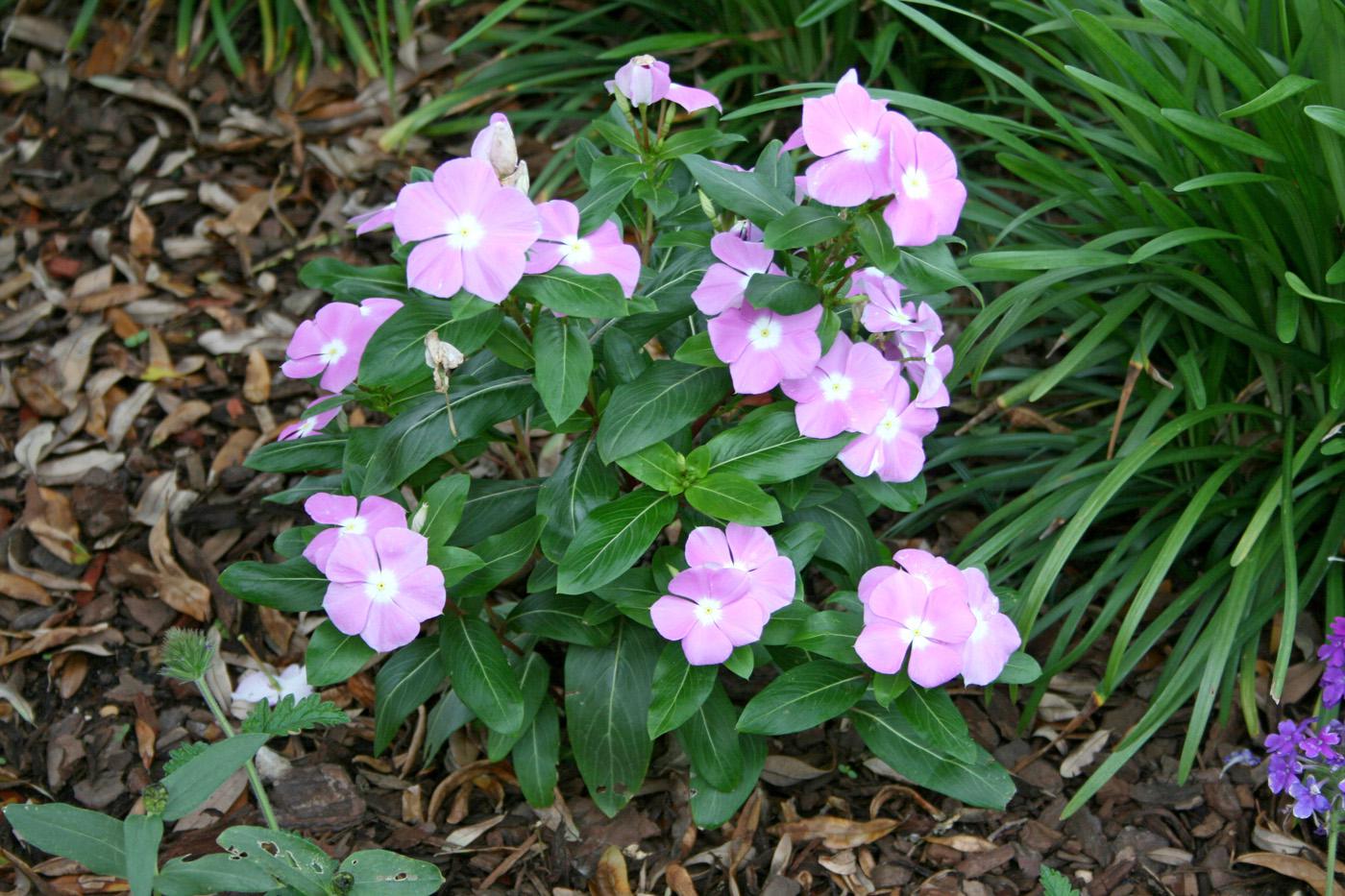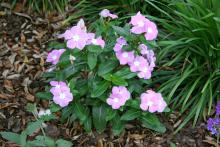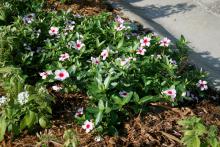Information Possibly Outdated
The information presented on this page was originally released on May 20, 2010. It may not be outdated, but please search our site for more current information. If you plan to quote or reference this information in a publication, please check with the Extension specialist or author before proceeding.
Annual vinca works well in summer heat
As spring turns into summer, gardeners start looking at flowering plants that take the heat while putting on a good floral display. Annual vinca is always a good choice.
Annual vinca’s foliage is a dark, glossy green with a prominent rib in the middle of the leaf. This dark background really sets the stage for showing off the white, pink, purple and red flowers.
Annual vinca is available in both upright and spreading growth habits. Various series have been studied extensively in the Mississippi State University trials at Crystal Springs and Poplarville.
The Titan series was a 2007 Mississippi Medallion winner and has been a fantastic performer. Titan has an upright growth habit, reaching 16 inches tall and 12 inches wide. Its flowers are bigger than those of other annual vincas. This series has 11 flower colors including apricot, dark red, pink, white, blush and lavender.
In recent years, plant breeders have developed annual vinca with a spreading growth habit. These plants are perfect for use as flowering groundcovers. They also excel in hanging baskets where the stems can trail over the basket edge.
The Mediterranean series is a spreading type. Colors include dark red, peach, strawberry and hot rose. These plants will get 6 inches tall but spread to 30 inches wide.
Annual vincas want to be planted in full sun, but don’t set them out too deep. Annual vincas do not like wet feet, so plant on raised beds to take advantage of the improved drainage. Amend the soil with 3 to 4 inches of good organic matter and till in well. Add a pound of 16-4-8 granular garden fertilizer to help keep those flowers coming all summer.
Annual vincas work well in containers and hanging baskets. These will be a little drier than landscape beds, and the annual vinca will love it. Transplant your selections into a commercial, peat-based potting mix with good drainage. Fertilize weekly with a 20-10-20 or 20-20-20 water-soluble fertilizer.
Annual vincas are drought tolerant once established. Be sure to mulch with up to 2 inches of your favorite organic mulch. This will help to hold moisture and also protect the bottom leaves from irrigation or rainfall splashing up on them.
Annual vincas are native to the southern region of Africa. In addition to having beautiful flowers, some native species are being investigated for use in the treatment of cancers and diabetes.
Annual vinca’s botanical name, Catharanthus roseus, means “rose-tinted, immaculate flower.” You will see why it is called that when you enjoy its pure colors in your landscape this summer.









